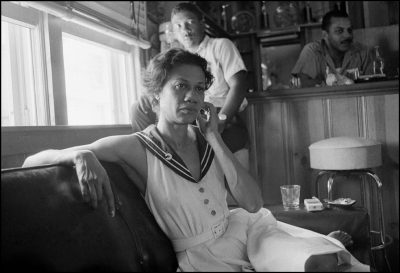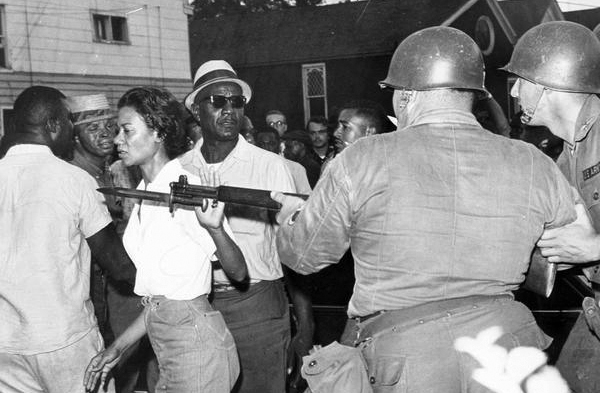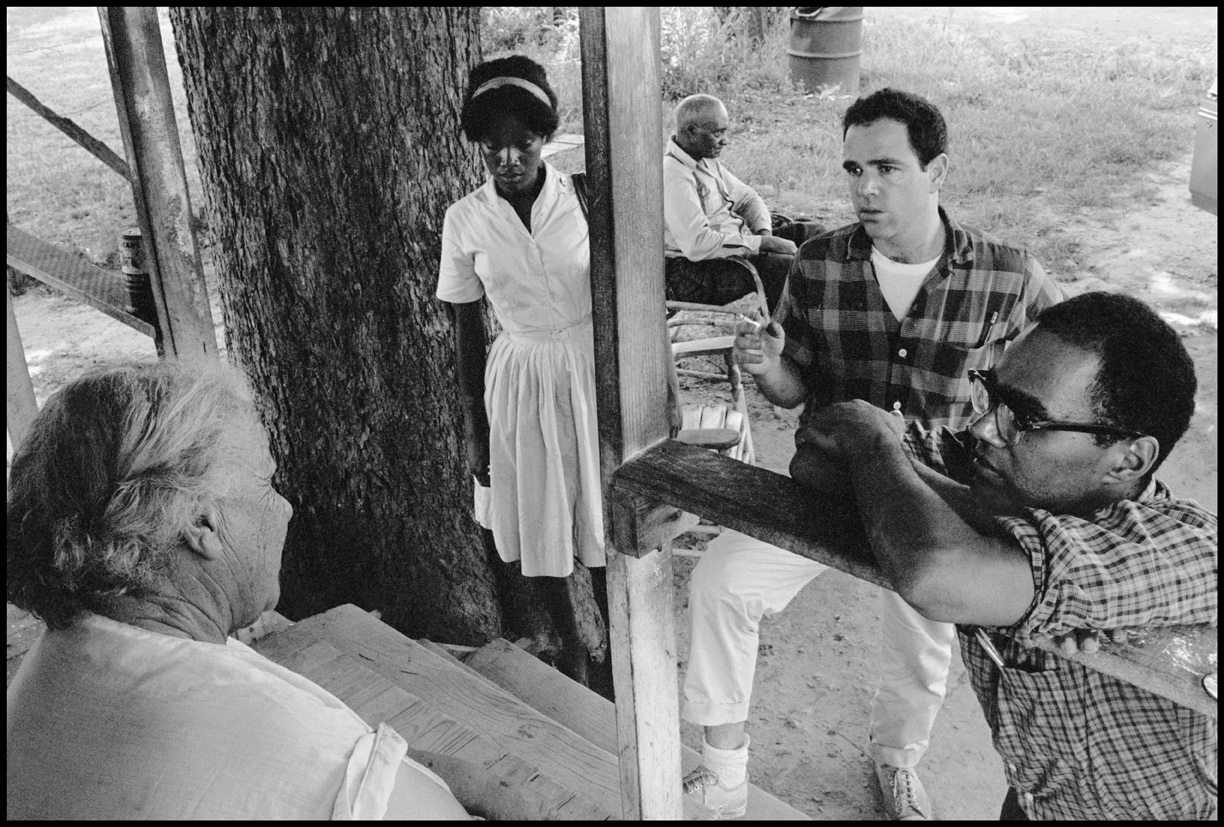The 1960s Student Non-Violent Coordinating Committee (SNCC): Gloria Richardson Dandridge and Bob Moses’ Monumental Contributions to Civil Rights
All across the South during the 1960s African Americans took the lead in ending legalized segregation and race terror.

All Global Research articles can be read in 51 languages by activating the “Translate Website” drop down menu on the top banner of our home page (Desktop version).
Visit and follow us on Instagram at @crg_globalresearch.
***
During the month of July, two heroic figures in the struggle against Jim Crow and race terror, Gloria Richardson Dandridge and Bob Moses passed away.
Their lives intersected with the upsurge in the African American led struggle for full equality and self-determination centered in the southern United States while having a profound impact nationally and internationally.
Gloria St. Clair Hayes was born on May 6, 1922 in Cambridge, Maryland to a family of hard working independent African Americans. Several members of her family were known as fighters for racial justice.
Richardson’s (her first married name) earliest involvement in the antiracist movement took place in 1938 when she became active in protesting segregation in Washington, D.C. as a student at Howard University. She also protested conditions at the premier Historic Black College and University (HBCU) during her tenure as a student. She would later return to Cambridge where prospects for employment were limited despite her graduation from Howard.
Dandridge worked in a pharmacy owned by a member of her family. She strongly opposed the inferior segregated educational and public facilities made available to African Americans in Maryland.
Years after returning to Cambridge she became involved in the Civil Rights Movement in the early 1960s. A series of demonstrations in December 1961 in the eastern shore city resulted in the arrests of several high school students including the daughter of Richardson.
By 1962, Richardson had made contact with the Student Nonviolent Coordinating Committee (SNCC) attending their national conference in Atlanta. She would join the executive board of SNCC bringing a different perspective on organizing to Cambridge. The Cambridge Nonviolent Action Committee (CNAC) was founded as an affiliate of SNCC in that same year.
SNCC had been formed as a direct result of the outbreak of sit-ins and boycotts demanding an end to segregation beginning in February of 1960. Demonstrations rapidly spread throughout the South in cities such as Greensboro, North Carolina, Nashville, Tennessee, and many others. These actions were led by students and youth from the African American community seeking an immediate solution to the centuries-long system of national oppression and economic exploitation.
SNCC was formed at Shaw University in North Carolina in April 1960. The organization remained independent of the Southern Christian Leadership Conference (SCLC), headed by Dr. Martin Luther King, Jr. Ella Baker, an organizer with decades of experience, served in 1960 as the executive secretary of SCLC. Baker encouraged the youth to form their own organization which they did. They would become the vanguard force in the broader struggle for Civil Rights and later Black Power.
An entry from the SNCC Digital Project on the contributions of Richardson, says that:
“The Cambridge Movement directed its work towards improving living conditions for the people of the Second Ward. Meanwhile, continuing militant CNAC protests angered not only the Kennedy administration nearby in Washington, D.C., but also national civil rights leaders. When the state of Maryland and federal negotiators, led by Robert Kennedy (then Attorney General under the John F. Kennedy administration), proposed voting for the right of access to public accommodations in 1963–a so-called “Treaty of Cambridge“–CNAC boycotted the vote. At a press conference, Richardson stated, ‘A first-class citizen does not beg for freedom. A first-class citizen does not plead to the white power-structure to give him something that the whites have no power to give or take away. Human rights are human rights, not white rights.’ The civil rights movement establishment was angered at her refusal.” (See this)
National Guard troops were deployed to Cambridge in the summers of 1963 and 1964 to quell protests and rebellions. Richardson and SNCC openly defied the occupation and were arrested on numerous occasions. During the protests, an infant and a senior citizen were killed as a direct result of police use of cyanogen (CN2), which is military grade crowd-control gas.
Cambridge Nonviolent Action Committee leader Gloria Richardson (Source: Abayomi Azikiwe)
It would take two years of persistent mass activity to break Jim Crow in Cambridge. Richardson would later remarry professional photographer Frank Dandridge and move to New York City.
Bob Moses and the Role of Local Leadership in the Civil Rights Movement
Robert Parris Moses was a leading figure in SNCC joining its staff in the early 1960s. He, like Richardson, was older than the majority of people in the student organization.
Born to a working-class family in New York City on January 23, 1935, Moses witnessed first- hand the impact of segregation and exploitation in an urban setting. He was committed to education and earned a B.A. from Hamilton College in 1956 and later a M.A. in Philosophy from Harvard in 1957.
Moses was teaching at the Horace Mann School in New York when Ella Baker sent him into Mississippi to organize a chapter of SNCC in 1960. He made contact with the National Association for the Advancement of Colored People (NAACP) official Amzie Moore. Later Moses joined the staff of SNCC and became a full-time organizer in Mississippi.
He witnessed the violence which was pervasive in Mississippi and other southern states in response to Civil Rights organizers. One leader in the voting rights struggle in Amite County, Mississippi was Herbert Lee, a successful African American cotton and dairy farmer. Lee was a charter member of the Amite County NAACP and was a proponent of defying the segregation laws prohibiting the majority of African Americans from voting in the state. (See this)
Moses worked with Lee in building up a campaign to encourage disenfranchised Black people to register and vote. On September 25, 1961, Lee was shot to death in broad daylight outside a cotton gin in Liberty, Mississippi by a white State Representative E.H. Hurst. After a grand jury indictment, Hurst was acquitted after a verdict of justifiable homicide was declared.
Later an eyewitness to Lee’s assassination, Louis Allen, also an agricultural producer and small businessman, informed federal law-enforcement personnel in 1964 that his testimony in the trial of E.H. Hurst was given under duress as armed white men were present in the courtroom. A day prior to Allen leaving the state of Mississippi in 1964, he was shot to death. No one was ever indicted for his murder after several investigations pinpointed the killer.
SNCC formed an alliance with the Congress on Racial Equality (CORE) and the Mississippi NAACP under the direction of state Vice President Amzie Moore, initiating the Council of Federated Organizations (COFO) in 1961, under whose banner that the Summer Project of 1964 was carried out. The project recruited hundreds of students and lawyers from other regions of the U.S. to come to Mississippi and assist with a massive voter registration effort.
On June 21, 1964, three youthful Civil Rights workers, Michael Schwerner, Andrew Goodman and James Chaney went missing near the town of Philadelphia, Mississippi in Neshoba County. Many of the students were still going through orientation in Ohio when word of the missing Civil Rights workers became national news. The three young men were found 44 days later, after a federal manhunt led by the FBI uncovered them buried in an earthen dam.
During the Freedom Summer project, scores of volunteers and local people were subjected to beatings and arrests. During that summer, the Mississippi Freedom Democratic Party (MFDP) recruited residents to attend the Democratic National Convention (DNC) being held in Atlantic City, New Jersey. The MFDP delegation demanded they be seated as the genuine representatives of the state since the segregationist Democrats excluded African Americans from voting.
The then President Lyndon B. Johnson was seeking election because he had inherited the position as a result of the assassination of John F. Kennedy in November 1963. When Ms. Fannie Lou Hamer of SNCC and the MFDP spoke before the Democratic National Convention credentials committee, Johnson called a press conference to preempt Hamer from gaining a national audience over television. The MFDP delegation was denied the right to replace the segregationists and instead were offered two seats at-large at the DNC. MFDP rejected the offer and returned to Mississippi after exposing the hypocrisy of the Johnson administration in regard to Civil Rights implementation. The 1964 Civil Rights Act had just been signed into law that same summer, yet African Americans could not be seated as the legitimate representatives of the people of Mississippi along with other southern states.
Two years later, Moses would leave the U.S. to live and teach in the East African state of Tanzania for a decade, then a center of the national liberation movements and socialist construction throughout the continent. His most recent formidable contribution was the development of the Algebra Project which focused on the teaching of mathematics to secondary school students in urban areas. Moses would later return to Harvard to earn a Ph.D.
Significance of the Civil Rights Struggle in 21st Century
Individuals such as Gloria Richardson Dandridge and Bob Moses along with other SNCC comrades should be studied by youth organizers in the 21st century. Their selfless sacrifices and fearlessness are two of the required characteristics among those seeking to build movements and organizations aimed at transforming society.
SNCC organizers Bob Moses with Martha Prescod and other activists in Mississippi during 1963 (Source: Abayomi Azikiwe)
Both of these pioneers utilized their formal education to serve the oppressed and working people in the U.S. and around the world. The work which they embarked upon remains incomplete as the forces of racism, capitalism and imperialism continue to rule the U.S. and many geo-political regions around the globe.
*
Note to readers: Please click the share buttons above or below. Follow us on Instagram, @crg_globalresearch. Forward this article to your email lists. Crosspost on your blog site, internet forums. etc.
Abayomi Azikiwe is the editor of Pan-African News Wire. He is a frequent contributor to Global Research.
Featured image: USA. 1963. Gloria RICHARDSON. (Source: Abayomi Azikiwe)



